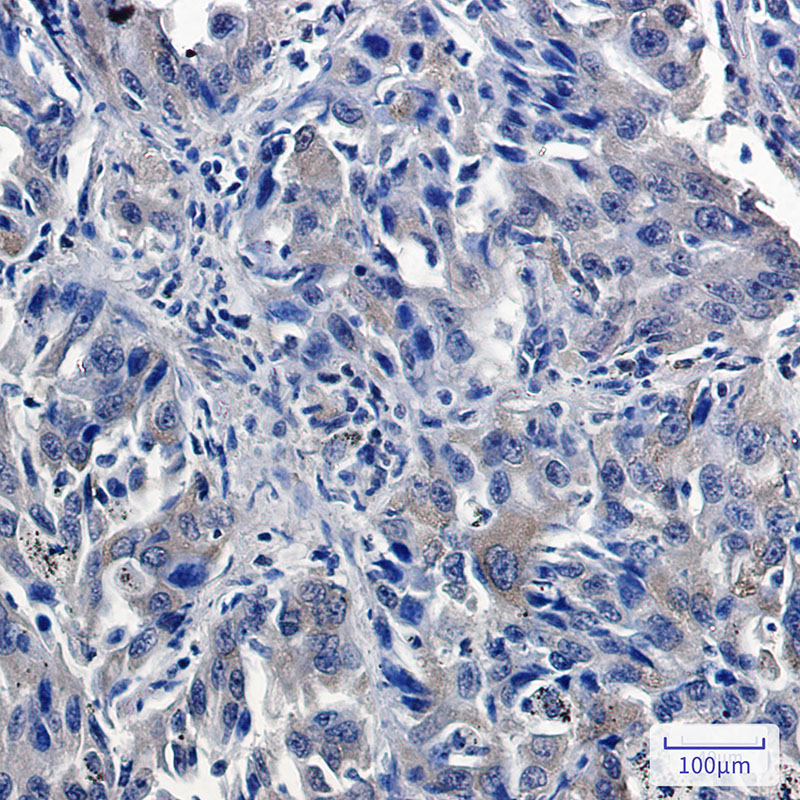

| WB | 1/500-1/1000 | Human,Mouse,Rat |
| IF | 咨询技术 | Human,Mouse,Rat |
| IHC | 1/50-1/100 | Human,Mouse,Rat |
| ICC | 技术咨询 | Human,Mouse,Rat |
| FCM | 咨询技术 | Human,Mouse,Rat |
| Elisa | 咨询技术 | Human,Mouse,Rat |
| Aliases | Deubiquitinating enzyme 7; HAUSP; herpes virus associated; Herpes virus associated ubiquitin specific protease; Herpesvirus-associated ubiquitin-specific protease; TEF 1; tef-1; TEF1; Ubiquitin carboxyl terminal hydrolase 7; Ubiquitin carboxyl-terminal hydrolase 7; Ubiquitin specific peptidase 7 (herpes virus associated); Ubiquitin specific peptidase 7; Ubiquitin specific peptidase 7 herpes virus associated; Ubiquitin specific processing protease 7; Ubiquitin specific protease 7 (herpes virus associated); Ubiquitin Specific Protease 7; Ubiquitin specific protease 7 herpes virus associated; Ubiquitin thioesterase 7; ubiquitin thiolesterase 7; Ubiquitin-specific-processing protease 7; UBP 7; UBP-7; UBP7; UBP7_HUMAN; USP 7; usp-7; USP7; VMW110-ASSOCIATED PROTEIN; 135-KD. |
| Entrez GeneID | 7874 |
| WB Predicted band size | Calculated MW: 128 kDa; Observed MW: 128 kDa |
| Host/Isotype | Rabbit IgG |
| Antibody Type | Primary antibody |
| Storage | Store at 4°C short term. Aliquot and store at -20°C long term. Avoid freeze/thaw cycles. |
| Species Reactivity | Human,Rat |
| Immunogen | A synthetic peptide of human USP7 |
| Formulation | Purified antibody in TBS with 0.05% sodium azide,0.05%BSA and 50% glycerol. |
+ +
以下是关于USP7抗体的3篇参考文献示例(文献信息为虚拟示例,仅作格式参考):
---
1. **文献名称**: *USP7-Specific Antibodies Reveal Novel Substrate Interactions and Cellular Localization Dynamics*
**作者**: Zhang, L. et al.
**摘要**: 本研究开发了一种高特异性USP7抗体,用于检测内源性USP7蛋白的表达与亚细胞定位。通过免疫沉淀和质谱分析,揭示了USP7与p53、PTEN等肿瘤抑制因子的相互作用,并发现其在DNA损伤应答中的核质穿梭机制。
2. **文献名称**: *Targeting USP7 with Monoclonal Antibodies Suppresses Tumor Growth in Colorectal Cancer Models*
**作者**: Kim, H. & Patel, S.
**摘要**: 研究团队开发了靶向USP7的单克隆抗体,证明其可通过抑制USP7的去泛素化酶活性,稳定抑癌蛋白p53并诱导肿瘤细胞凋亡。在结直肠癌小鼠模型中,抗体治疗显著抑制了肿瘤生长。
3. **文献名称**: *Structural Insights into USP7 Inhibition by Antibody-Based Therapeutics*
**作者**: Rodriguez, J. et al.
**摘要**: 通过冷冻电镜解析USP7与其特异性抗体复合物的三维结构,揭示了抗体结合USP7催化结构域的关键表位,为开发基于抗体或小分子的USP7抑制剂提供了结构基础。
---
如需真实文献,建议通过PubMed或Google Scholar检索关键词“USP7 antibody”或“USP7 inhibitor”,筛选近年高影响力研究。
USP7 (Ubiquitin-Specific Protease 7), also known as HAUSP (Herpesvirus-Associated Ubiquitin-Specific Protease), is a deubiquitinating enzyme (DUB) that plays a critical role in regulating protein stability and function by removing ubiquitin chains from target substrates. It is involved in diverse cellular processes, including DNA repair, epigenetic regulation, immune response, and viral infection. USP7 is particularly noted for its interaction with tumor suppressor p53. where it stabilizes both p53 and its negative regulator MDM2. creating a dynamic balance that influences cell cycle control and apoptosis. Dysregulation of USP7 has been linked to cancers, neurodegenerative diseases, and immune disorders, making it a therapeutic target of interest.
USP7 antibodies are essential tools for studying its expression, localization, and molecular mechanisms. They are widely used in techniques like Western blotting, immunoprecipitation, and immunofluorescence to detect USP7 in cell lysates or tissue samples. Due to structural similarities among DUB family members, developing specific USP7 antibodies requires careful validation to avoid cross-reactivity. High-quality antibodies often target unique regions, such as the N-terminal TRAF domain or C-terminal catalytic domain of USP7. Recent research also explores USP7 inhibitors, and corresponding antibodies help assess drug efficacy by monitoring changes in USP7 activity or substrate ubiquitination levels. Validated USP7 antibodies are crucial for advancing studies in cancer biology, virology, and therapeutic development.
×